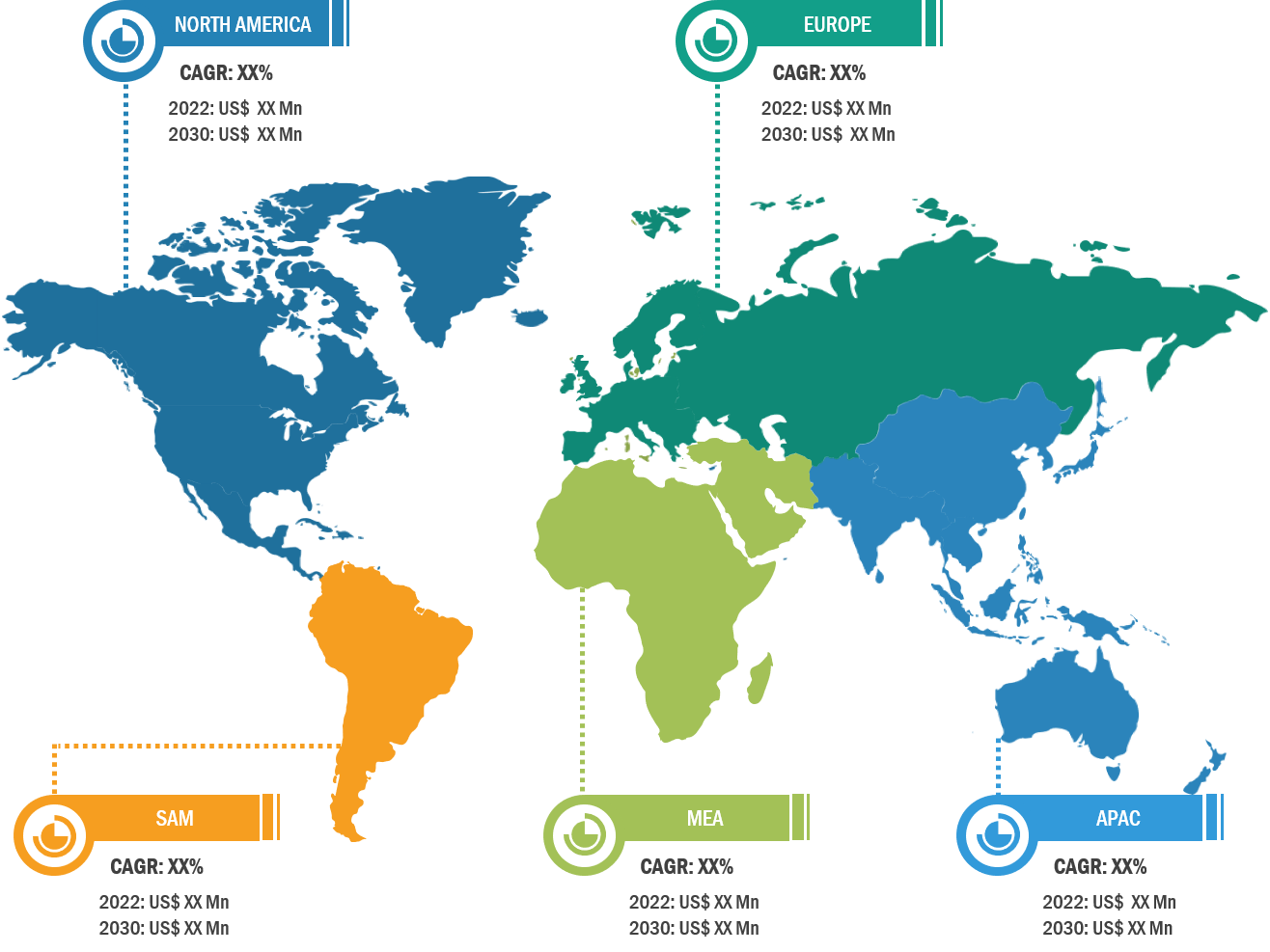Growing Demand for Energy Boost Solar Energy Market Growth
According to our latest market study on "Solar Energy Market Forecast to 2030 – COVID-19 Impact and Global Analysis – by Technology, Application, and End User," the market was valued at US$ 207,270.00 million in 2022 and is expected to reach US$ 552,450.28 million by 2030; it is anticipated to account for a CAGR of 13.0% from 2022 to 2030.
The increasing population and industrialization are fueling the demand for energy globally. In 2022, energy consumption increased by 3% in China, the world's largest energy consumer (25% in 2022), while it grew by 1.8% in the US (an increase of 4.9% in 2021). Due to strong economic growth, energy consumption grew rapidly in India, Indonesia, Saudi Arabia, and Canada. The rise in energy consumption also boosted the need for alternative energy generation sources, as conventional energy resources such as fossil fuels are leading to environmental pollution. Renewable alternative options such as solar emerged to curb immense carbon emissions and their negative impact on the environment, along with the agenda of balancing the energy supply and demand. In 2022, solar PV accounted for ~4.5% of total global electricity generation and is anticipated to increase in the coming years. In 2022, the new solar installed capacity was 239 GW, i.e., an increase of 45% compared to 2021. Also, 341 GW of new solar power will be added to the grid by the end of 2023. Thus, the growing energy demand is boosting the demand for solar energy systems, which is driving the solar energy market.
Solar Energy Market Share — by Region, 2023
Published Report - Solar Energy Market Size and Forecasts (2020 - 2030), Global and Regional Share, Trends, and Growth Opportunity Analysis Report Coverage: By Technology (Photovoltaic Systems, Concentrated Solar Power Systems); Application (Electricity Generation, Heating, Others), and End User (Residential, Commercial & Industrial, Utility Scale)
Solar Energy Market Growth Report – Size, Share 2030
Download Free Sample
Source: The Insight Partners Analysis
With a seismic transformation in the energy landscape, the European Union (EU) achieved a groundbreaking target by introducing an unprecedented 41.4 GW of solar power capacity in 2022. This enormous addition fulfills the energy demands of 12.4 million European households, effectively displacing the necessity for 102 liquefied natural gas (LNG) tankers. The yearly expansion of solar power within the EU surged by 47%, surpassing the record of 28.1 GW in 2021. Amid an unparalleled energy crisis and escalating concerns regarding energy security, the cumulative solar power capacity across the EU skyrocketed by 25% in a year, escalating from 167.5 GW to an impressive 208.9 GW in 2022. The trajectory of solar energy growth in Europe is expected to continue growing in the coming years. Under SolarPower Europe's projections, the anticipated average for 2023 projects an influx of 53.6 GW of additional solar power within the EU. This projected growth propels the region toward a remarkable milestone of at least 85 GW of new solar power each year by 2026. Consequently, this trajectory also signifies that the EU's solar energy market is anticipated to exceed its current capacity within four years, ultimately recording 484 GW by 2026.
Growing focus on curbing environmental pollution by reducing greenhouse gas emissions and rising government initiatives toward increasing the stake of renewable energy resources in the overall power mix are major reasons for the solar energy market growth in Asia Pacific. China, Australia, India, and Japan are a few key countries contributing to the Asia Pacific solar energy market share. Growing focus on concentrated solar power plants and increasing demand for energy security are important drivers for the solar energy market in Asia Pacific. Net zero carbon emission targets of major countries and reducing carbon footprint in the industrial sector are also boosting the solar energy market in Asia Pacific. The growing government initiatives regarding rebates and tax credits influence the solar energy market growth. The rebates for solar panels and rooftop solar systems are increasing the application of solar systems in the residential and commercial sectors. Per the International Energy Association (IEA), China remains at the forefront of solar PV capacity expansion by recording a substantial addition of 100 GW in 2022, thereby marking an impressive growth of ~60% compared to 2021. The release of the 14th Five-Year Plan for Renewable Energy in 2022 has outlined ambitious deployment objectives that are poised to stimulate continued capacity expansion in the forthcoming years. Also, India installed 18 GW of solar PV in 2022, marking a notable growth of ~40% compared to 2021. This momentum is expected to escalate due to the establishment of a new target to auction 40 GW of PV capacity, along with the dynamic progression of the domestic supply chain.
JinkoSolar Holding Co Ltd, Canadian Solar Inc., Trina Solar Co. Ltd, First Solar Inc., ADT Solar, ACCIONA Energía, BrightSource, Abengoa SA, Heliogen Inc., and Nextera Energy Resources are among the key solar energy market players profiled during this study. In addition, several other important solar energy market players were studied and analyzed during this study to get a holistic view of the market and its ecosystem.
Contact Us
Phone: +1-646-491-9876
Email Id: sales@theinsightpartners.com